International flights to make steady recovery from COVID-19 impacts
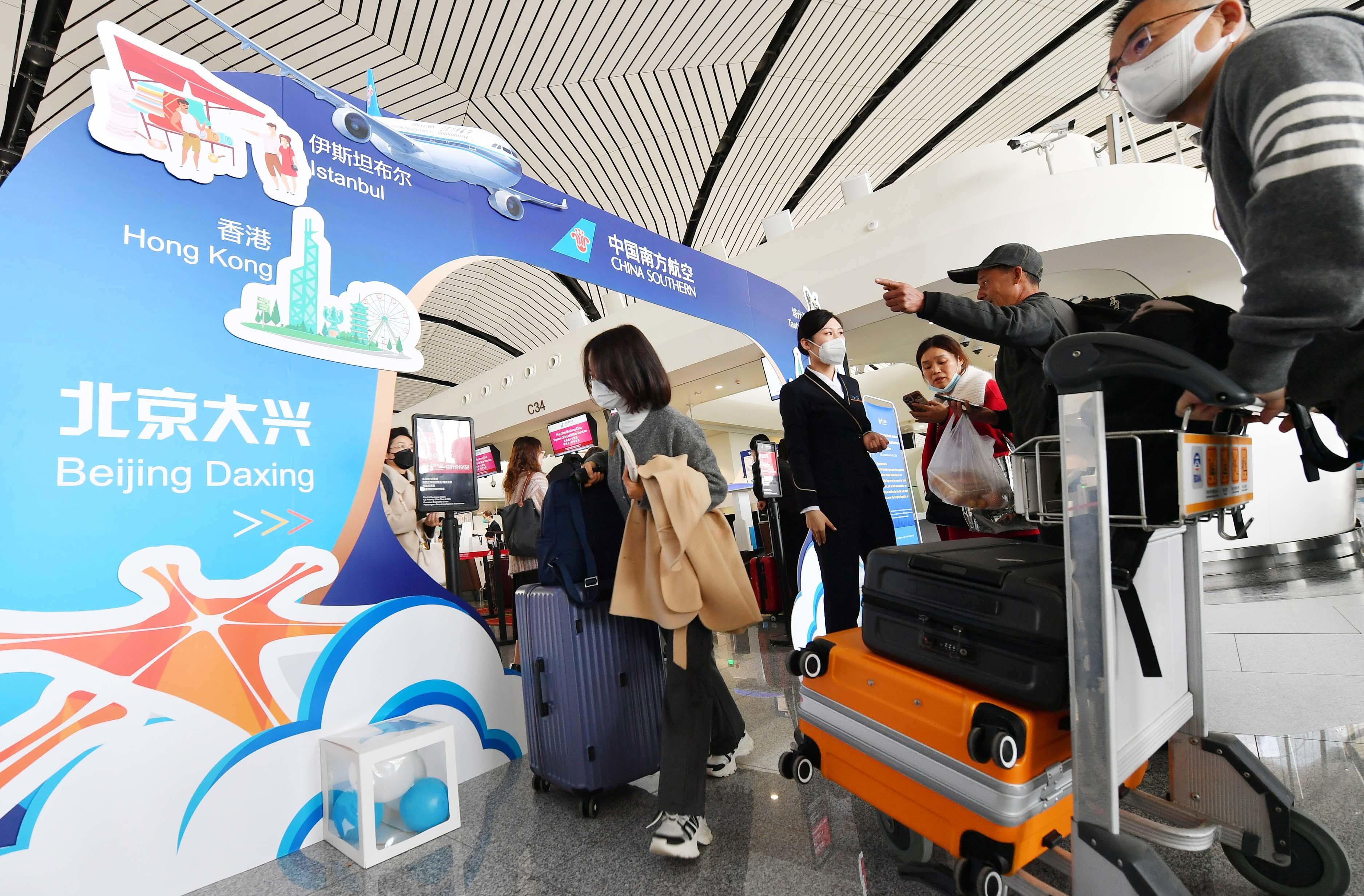 Passengers line up at the check-in counter for international flights operated by China Southern Airlines at Beijing Daxing International Airport in March. (YUAN YI / FOR CHINA DAILY)
Passengers line up at the check-in counter for international flights operated by China Southern Airlines at Beijing Daxing International Airport in March. (YUAN YI / FOR CHINA DAILY)
In May, a woman from Beijing, surnamed Shang, traveled to San Francisco on her first trip to the United States in three years. She and her family had previously spent more than eight years in the US.
Shang began searching for a ticket to San Francisco in January, when China optimized its COVID-19 response measures, booking her trip the following month.
Routes to Australia and Europe have recovered the best, with a more than 50 percent resumption, followed by Southeast and Northeast Asia.
Lin Zhijie, civil aviation industry analyst
"I meant to book the journey earlier, but when I started to search for a ticket, none were available. Choices were very limited," she said.
Shang was a frequent global traveler before the pandemic, but she said air ticket prices are now higher and the number of direct flights to the US is limited.
"Some of my friends from the US complained about the prices. They said it was too expensive to go home," Shang said, adding that she is aware that more direct flights between the two countries will resume soon. "This is good news, as it is tiring to make transit stops."
In May, a flight that Shang took from Beijing to Hong Kong was severely delayed, and she missed her connection to San Francisco. Although a flight she eventually took from Beijing to San Francisco via Tokyo was on time, she found it exhausting having to travel for 20 hours with her 6-year-old daughter.
"I'm looking forward to more direct flights," Shang said.
The US Department of Transportation said on Aug 11 that Chinese airlines could make 18 round-trip flights to the US a week, up from 12, starting Sept 1. By the end of October, the number of such flights will rise to 24 per week.
From Sept 1, Chinese and US airlines will be allowed to make a total of 36 round-trip flights a week, with the number rising to 48 from Oct 29.
By then, the number of passenger flights between the two countries will have doubled, offering far greater convenience for travelers.
It will be the second increase in such flights since August 2020. The first was in May, when the US Department of Transportation said the number of direct flights between the two countries would rise to 12 per week — matching the number of those operated by Chinese carriers.
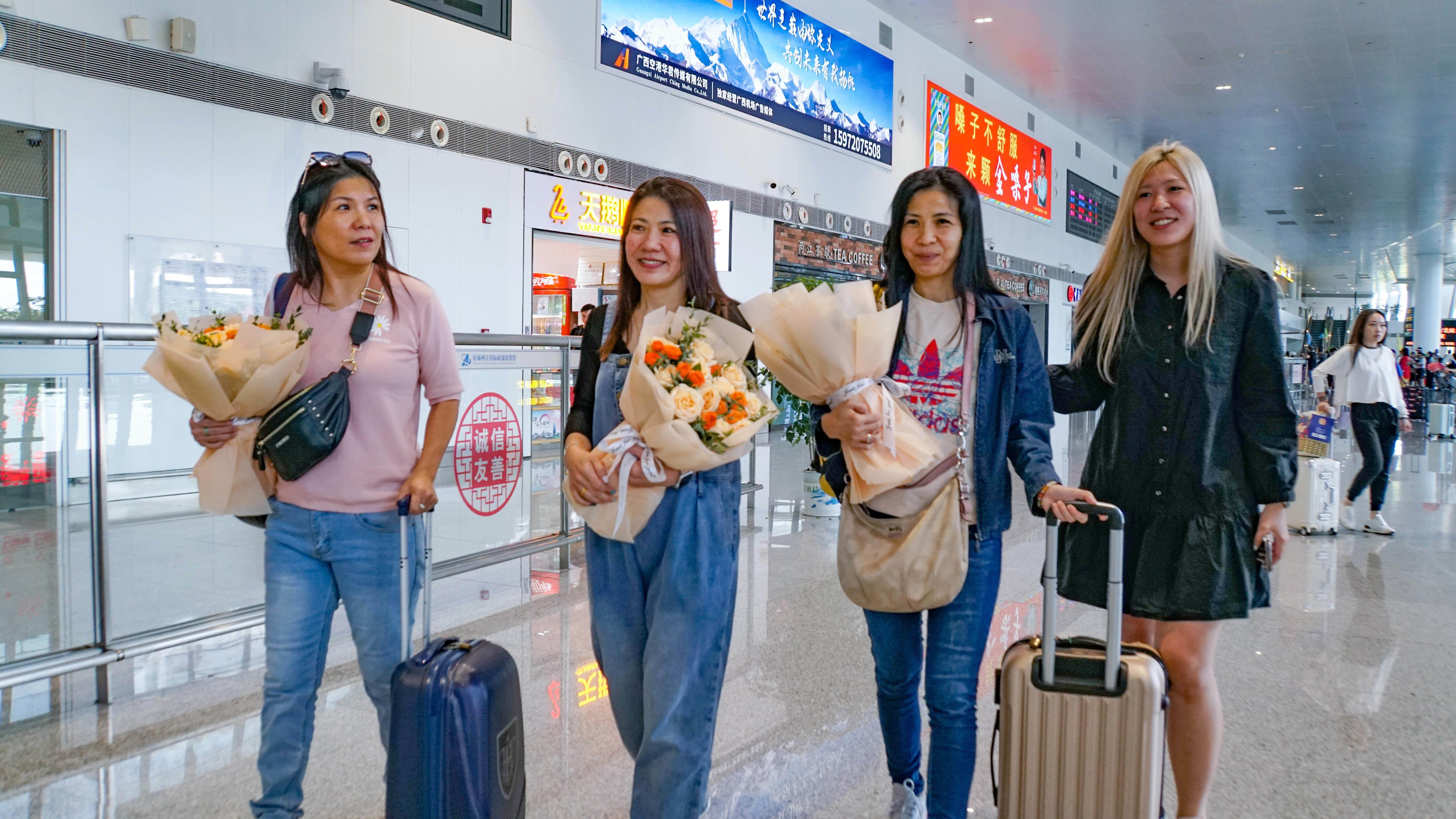 Visitors arrive in Guilin, Guangxi Zhuang autonomous region, on June 29 on a flight from Kuala Lumpur, Malaysia. (PHOTO / CHINA NEWS SERVICE)
Visitors arrive in Guilin, Guangxi Zhuang autonomous region, on June 29 on a flight from Kuala Lumpur, Malaysia. (PHOTO / CHINA NEWS SERVICE)
Positive signs
China announced on Aug 10 the resumption of group tours to 78 countries and regions, including the US, the United Kingdom, Japan and Australia.
Last month, an economic work meeting of the Political Bureau of the Communist Party of China Central Committee called for an increase in the number of international flights in the second half of this year.
Due to the pandemic, international flights to and from China were greatly reduced.
In March 2020, China introduced the "circuit breaker" policy — suspending flights operated by an airline for two weeks if five or more passengers tested positive for COVID-19 upon landing in China, or for four weeks if 10 or more passengers tested positive.
Only a very small number of international passenger flights continued to operate during the pandemic. Data from the Civil Aviation Administration of China show that in August 2021, the number of flights to and from China was about 2.15 percent of the volume recorded in 2019.
The number of international flights has risen gradually since January, as China optimized its response measures to COVID-19 and promoted the resumption of cross-border air travel.
As of Aug 11, the number of international passenger trips made this year, including those to Hong Kong, Macao and Taiwan, exceeded 3.5 million at Beijing Capital International Airport.
The airport's international network now extends to 204 destinations in 47 countries and regions, and includes more than 30 routes.
Yu Jiangning, duty manager at the airport's operations control center, said, "The number of international flights has risen since January, and this trend has continued during the summer holiday season."
Feng Liwei, who also works at the center, said: "I am very happy to see the airport crowded again. During the pandemic, it was so quiet."
At Shanghai Hongqiao International Airport, the number of inbound and outbound international passenger trips for this year exceeded 1 million as of Aug 9.
The Hongqiao Border Inspection Station said an average of 7,600 passengers a day pass through the airport. During peak periods, the number can reach 10,000.
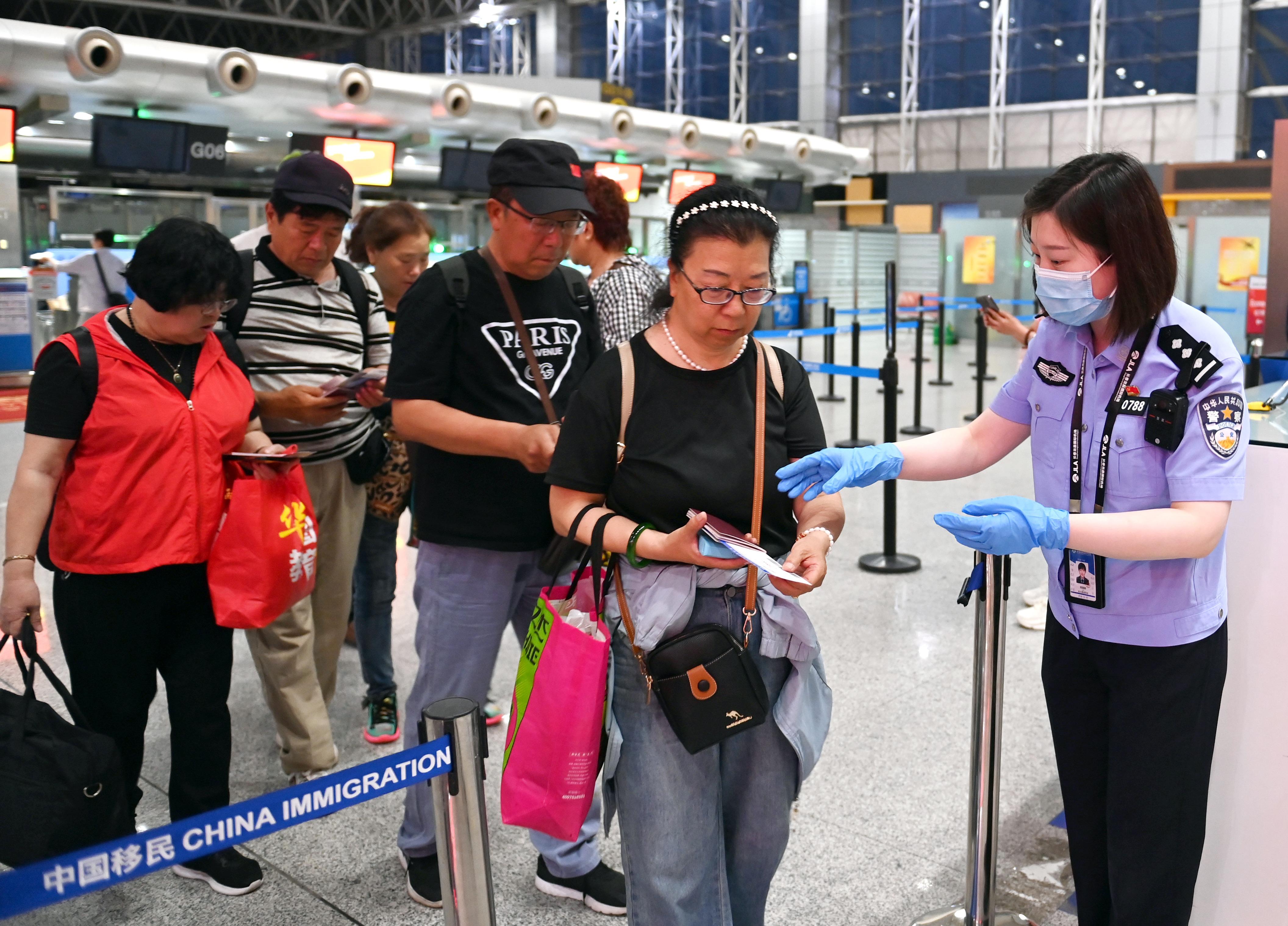 Tourists from Changchun, Jilin province, head for a flight to Nha Trang, Vietnam, in June. (PHOTO / CHINA NEWS SERVICE)
Tourists from Changchun, Jilin province, head for a flight to Nha Trang, Vietnam, in June. (PHOTO / CHINA NEWS SERVICE)
Unbalanced recovery
Earlier this year, the Civil Aviation Administration estimated that if the market recovers well, the number of international flights to and from China is expected to rise to about 75 percent of the pre-pandemic level.
As of the end of June, 3,368 such flights were being made per week, about 44 percent of the volume before the pandemic.
Last month, 3.35 million international trips were made to and from China, nearly 51 percent of the volume recorded for the same period in 2019, the administration said.
Lin Zhijie, a civil aviation industry analyst, said: "The number of China's international flights has risen to about 48 percent of the level in 2019, but the level of recovery varies in different regions. Routes to Australia and Europe have recovered the best, with a more than 50 percent resumption, followed by Southeast and Northeast Asia, but few services between China and North America have resumed, with a recovery rate of about 8 percent."
Qi Qi, a senior aviation expert, said, "The number of flights to some Asian countries, such as Japan and South Korea, has returned to a certain level."
However, flights to the US and Canada have not fully resumed due to the lack of market demand, Qi said.
Li Xiaojin, a professor of aviation economics at Civil Aviation University in Tianjin, said: "Some countries, such as the US, require equal civil aviation rights, and some are still recovering from the impact of COVID-19, with less demand for international travel. After all, business travelers comprise the majority of customers on international flights.
"Carriers from both countries (China and the US) are willing to increase the number of international services, but political reasons are an obstacle to the resumption," he said.
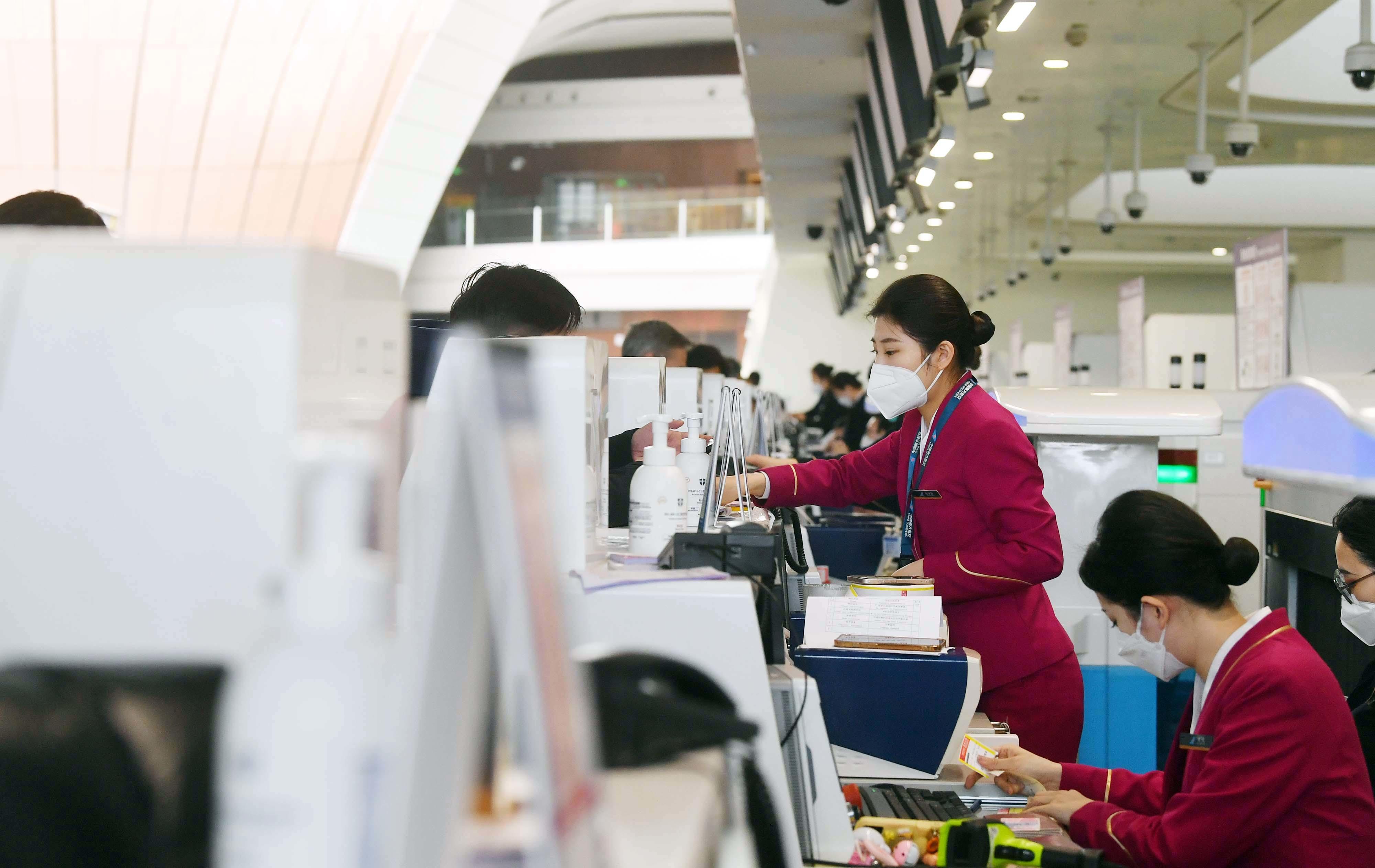 China Southern Airlines check-in staff members work at Beijing Daxing International Airport in March. (YUAN YI / FOR CHINA DAILY)
China Southern Airlines check-in staff members work at Beijing Daxing International Airport in March. (YUAN YI / FOR CHINA DAILY)
Three levels of preparation are required to restore an international air route, Li said. Civil aviation rights have to be obtained at the State level, airports on both sides must be ready for such a resumption, and airlines need to train staff members and plan for ticket sales.
"Due to the pandemic, many professionals have left the industry in the past three years. Some airports and airlines have had to rehire staff members and train them to prepare for a resumption of international services," he said.
Lin agreed that the reasons for a slower recovery vary in different places.
"For instance, the number of services operating between China and the US, as well as Canada, remains low because of the impact of the recent relationship between the sides," he said.
"Also, during the pandemic, overseas airports and airlines greatly reduced their staff numbers, such as those employed in handling luggage and preparing meals. It takes time to rehire staff, which also adds to the problem of putting on more flights.
"The new policy to boost outbound group tours was announced recently, but demand for outbound travel has not fully returned."
Lin said other issues, such as long waiting times to obtain visas to popular destinations, also deter Chinese from traveling abroad.
One Shanghai resident, surnamed Wang, was planning to take her son to the US this summer, but visa problems meant the trip had to be called off.
"So many people are applying for visas. When I checked last month, the first appointment I could arrange was in December," she said.
Instead, she and her son went to Japan earlier this month.
"The round-trip airfare from Shanghai to Tokyo was reasonable — about 3,400 yuan ($465) per person," she said, adding that the price was about the same as before the pandemic emerged.
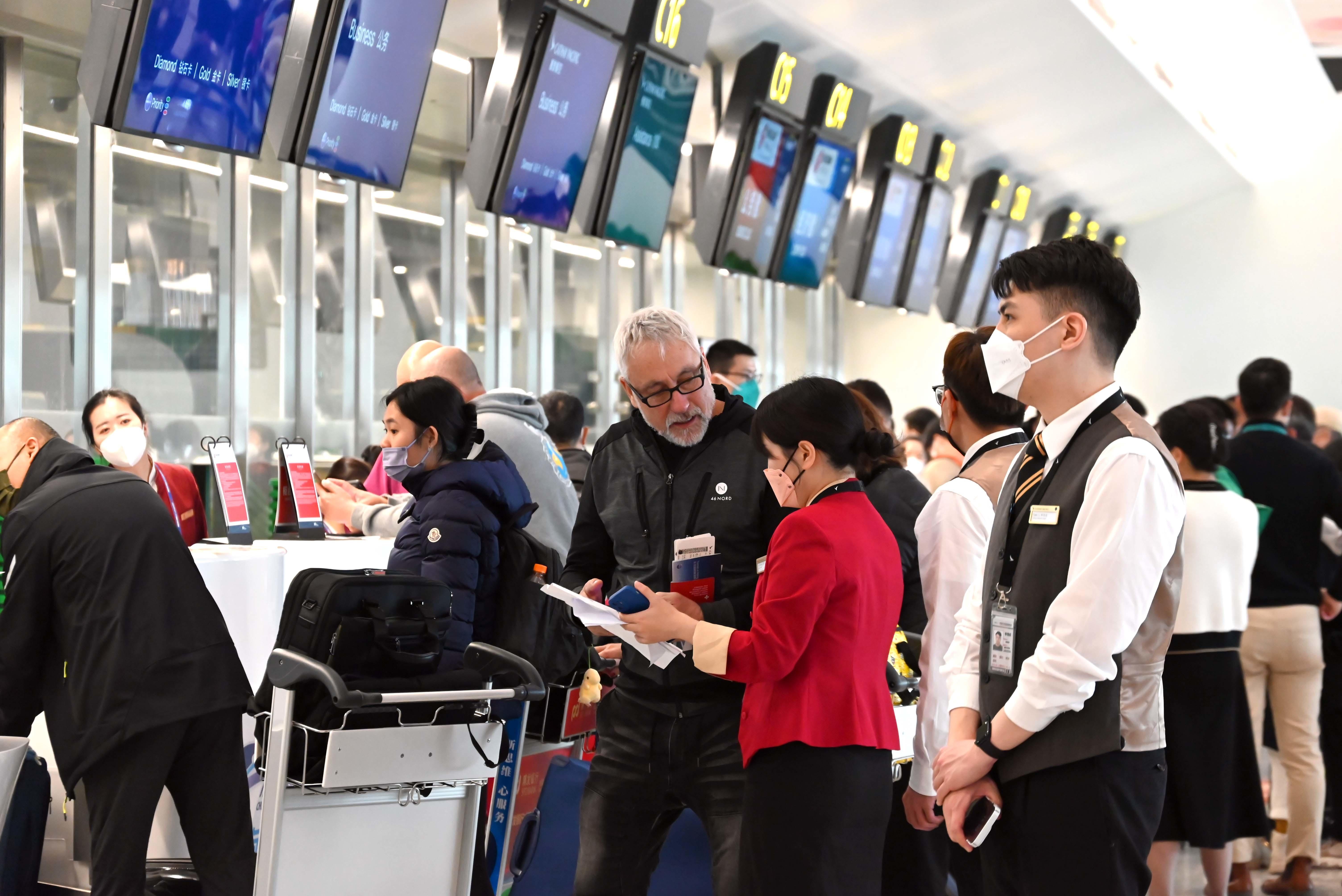 Passengers wait to be checked in at Tianfu International Airport in Chengdu, Sichuan province, in March. (PHOTO PROVIDED TO CHINA DAILY)
Passengers wait to be checked in at Tianfu International Airport in Chengdu, Sichuan province, in March. (PHOTO PROVIDED TO CHINA DAILY)
Steady growth
Lin, the analyst, said China's international civil aviation market is not recovering as well as those in other parts of the world, as China opened up after the pandemic later than many other countries.
"Last year, some countries fully lifted controls on international routes," he said, adding that the market is also affected by the relationship between China and other nations, such as the US.
He estimated that China will witness a steady recovery in its international routes.
Shang, the passenger from Beijing, has firsthand experience of the recovery being made.
She traveled from Beijing to San Francisco and back in May, and again earlier this month — making the respective bookings in February and June.
"When I booked in June, there were more choices than in February," she said.
Qi, the senior aviation expert, said, "China will welcome more international services."
Li, from Civil Aviation University, said the economy has been disrupted by the pandemic. With many economic activities suspended during the past three years, it is hoped to boost the economy by promoting travel.
"Economic development in many cities, including Beijing, is highly dependent on the civil aviation sector," Li said.
"We studied the impact of the civil aviation industry on Beijing's economy, and our research found that the industry affected economic activities that produced 15 to 16 percent of the city's GDP."
Li added that many related industries will be affected if international flights do not resume.
"Airlines will first increase capacity on international flights and then reduce ticket prices," Li said, adding that for carriers, selling a large number of tickets at a reasonable price is the best way to maintain a sustainable profit.


